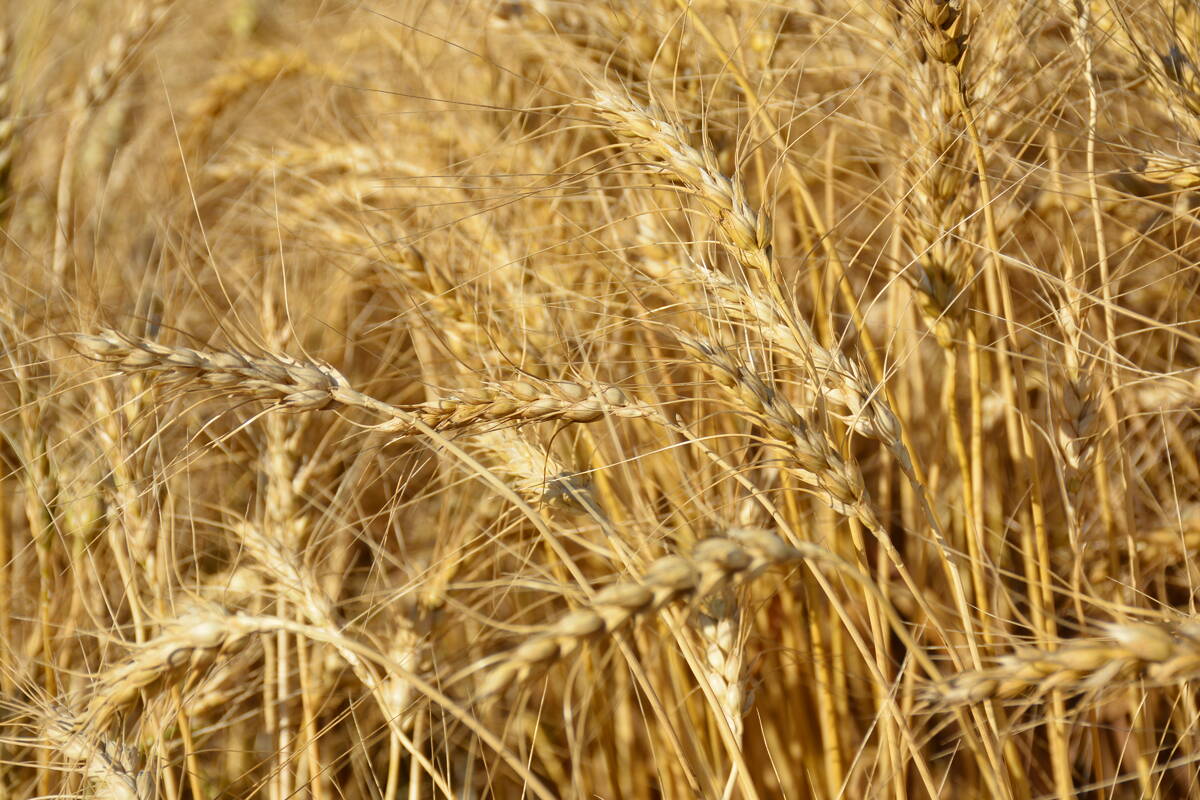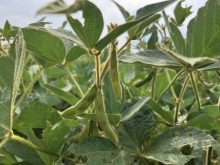There are enticing signs that managing sulphur levels in soybean fields means more yield.
Adequate sulphur encourages more nodulation, which means more opportunity for the soybean plant to make use of nitrogen, says Shaun Castreel, of Purdue University.
Castreel and Horst Bohner, soybean specialist with the Ontario Ministry of Agriculture, Food and Agribusiness, spoke about reaching 100-bushel soybeans at the South West Agricultural Conference at Ridgetown Jan. 7, 2025.
Read Also

Scientists discover a gene that could triple wheat production
This discovery could give breeders a powerful new tool to boost yields without needing more land, water, or fertilizer.
“It’s not always is going to be one treatment that’s going to get you there,” says Castreel. “But there’s going to be a system that we want to set up.”
In the case of Castreel’s research at Purdue, most of the systems involved increasing sulphur application.
Bohner says that 20 years ago there wasn’t much Ontario research to support supplementing soybeans with sulphur, but he’s seen some recent developments that make him think that there’s value in looking at extra sulphur.
Soils with lower organic matter are the easiest target for increased sulphur, especially sandy soils. A trial by Maizex in sandy soils near Simcoe showed a jump in soybean yields from 49.9 bushels per acre to 76.6 bushels per acre with the addition of 100 pounds per acre of ammonium sulphate (AMS).
“I do really think that if you employ some of these strategies that we’ve been talking about here, there are some real bushels for us that’s nothing to sneeze at,” says Bohner.
There’s about 20 per cent of the sulphur available now from rain as there was when acid rain was an issue. Grain in the soybean takes about 14 lbs of sulphur, then add in the stover and Castreel says that means about 26 pounds of sulphur taken out of the soil by soybeans.
If there’s five pounds per year from the environment and 26 taken out, then that leaves about 21 pounds that needs to be replaced, but the story isn’t that simple.
Sulphur is a macronutrient, and helps with micronutrient availability, says Castreel.
It also has a definite effect on nodulation and that has an effect on nitrogen uptake and stay green.
“This huge benefit is in those situations where we have limited sulfur supply in our nodulation and fixation capacity,” says Castreel.
From the large amount of sulphur and soybean research he’s done since 2015 Castreel’s recommendations include:
- Make sure to use a soluble source of sulphur like AMS. He prefers granular to a liquid source. Micro-encapsulated sulphur products also work as does pelletized gypsum (calcium sulphate).
- Apply less than six weeks before planting at between 15 and 20 pounds per acre.
- Applying potash close to planting should be avoided, as it can affect root hairs. “You’re not going to see a stand difference per se, but on some of my ground we’re getting about a five bushel yield hit from potash put out close to planting and it’s only 100 pounds of product.”
- They were able to overcome some of that loss by applying sulphur, but then the further benefit of the sulphur was missed.
In Ontario, Bohner’s recent trials, including 35-site years of data, show that applying 100 pounds of ammonium sulphate can add three bushels per acre, which pays for the treatment.
“There is actually enough there with three bushels, which is a totally different story than the earlier data set,” says Bohner. He cautions, however, that there’s still research needed on exactly when the conditions exist where sulphur makes the most sense.
On coarser soils, Bohner is ready to say the evidence is enough.
“So on sandy soils, I’m to the point recommend that we apply a reasonable amount of ammonium sulfate.”
Other yield-bumps in soybeans
Beyond sulphur, Castreel identified several other ways that can add up to greater soybeans yields.
Researchers began encouraging earlier planting dates for soybeans about five years ago, and Castreel’s research in Indiana shows that advantage plainly.
The Purdue soybean research team has been moving its soybean planting date closer to corn planting and as they’ve done that in the past five years, yields have been rising too.
Castreel says that narrower rows consistently show higher yields, although there remain challenges with the amount of extra seed needed to get soybeans to final stands when planting with a drill.
Castreel says the slow growth with early planted soybeans helps to add nodes which means denser soybean plants, with more potential for yield.
Weed control is key and narrow row spacing also helps with quicker canopy closure. Narrower rows can close the row 20 days earlier.
“So it’s about harvesting sunlight right?” says Castreel.
Proper variety selection results in a six to seven bushel per acre yield bump, says Castreel. Make sure local crop growing needs are followed. In Ontario that means making sure that the soybeans are resistant to soybean cyst nematode.















